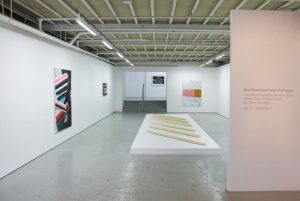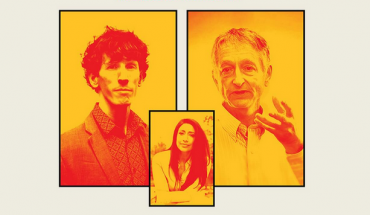A Montreal-based AI company, participating in the COP 26 global environmental conference that gets underway in Scotland this weekend, will show its AI-enabled clean technology that can reduce the amount of fossil fuels we use to heat and cool our buildings.
That’s good because fossil fuels can be very dangerous.
Among its warnings and recommendations, the Special Report on Climate Change and Health to be tabled for COP 26 includes some strikingly blunt language:
“The burning of fossil fuels is killing us.”
BrainBox AI is hoping for another outcome. The Montreal-based start-up develops predictive and self-adaptive commercial building technology to reduce fossil fuel and energy use, and it is one of just ten start-up companies participating in the global Tech For Our Planet challenge program at COP 26.
The company will demonstrate how smart buildings and interactive grids can be used to achieve net zero carbon emissions objectives. Its AI-powered platform is used to monitor and share data to better predict and manage energy consumption.
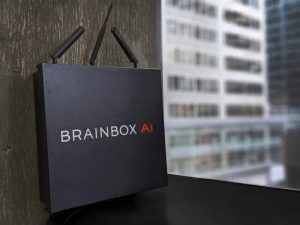
BrainBox AI, currently installed in buildings in 17 countries, combines AI and cloud computing to make building operations smarter and environmentally safer. Image courtesy BrainBox AI.
The platform, currently installed in buildings in 17 countries, combines AI and cloud computing to make building operations smarter by delivering fully autonomous commercial heating, ventilation, and air conditioning (HVAC) solutions. By monitoring numerous data points about a building’s operation, usage and environment, it can make real-time decisions about how to optimize the HVAC system and reduce fossil fuel energy consumption and resultant carbon emissions.
That’s good, because a tenth of total carbon emissions come from burning fossil fuels – primarily gas – for heating and cooking in homes and businesses. Fossil fuels are used for 75 per cent (pdf download here) of the energy produced for heating and buildings are responsible for 36 per cent (pdf download here) of greenhouse gas (GHG) emissions from energy, according to European and U.S. analysis.
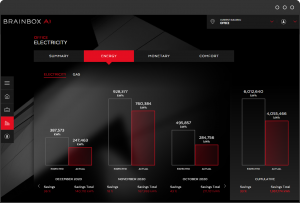
BrainBox AI says its platform can enable building operators to see up to a 50 per cent extension in the service life of their heating, ventilation and air conditioning equipment. Image courtesy BrainBox AI.
So when BrainBox AI says its deep learning and cloud-based computing algorithms produce a saving in total energy costs of up to 25 per cent, an up to 40 per cent reduction in carbon footprint and a 60 per cent increase in “occupant comfort”, that is a big deal.
“BrainBox AI is excited to present our groundbreaking artificial intelligence technology as part of COP26’s showcase of some of the top companies helping to save our planet for future generations,” said Sam Ramadori, President of BrainBox AI, in advance of the event. “The recent IPCC Report laid out in stark terms how the Earth is transforming in unprecedented ways. Reducing carbon emissions and other greenhouse gases may be our only chance to limit destruction to our climate. By implementing technologies like BrainBox AI in one of the world’s greatest energy consumers, buildings, we can turn the tide and help the real estate industry play its part in stopping the effects of climate change.”
Just ahead of its COP 26 presentation, BrainBox AI reported that it had activated its global monitoring network, which provides 24/7 support and HVAC system analysis to its customers around the world.
It’s part of a solution that brings together networks of BrainBox AI-connected buildings to form an artificial intelligence-powered ecosystem of grid-interactive efficient buildings (GEBs). AI algorithms and programs monitor internal building and external datasets, including factors such as time-of-day utility costs, weather forecasts, and pollution levels.
Together, the group of pooled, connected buildings optimizes energy use and manages energy demand for all its members, providing even greater ability and flexibility to meet evolving – we hope decreasing – power consumption needs.
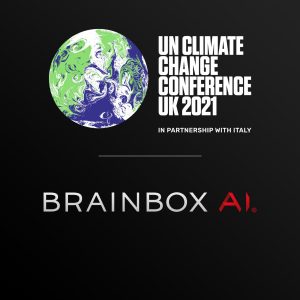
BrainBox AI will showcase its innovative technology at the 26th United Nations Climate Change Conference (CNW Group/BrainBox AI).
Founded in 2017, now with more than 100 employees, BrainBox AI counts clients in numerous sectors, including office buildings, airports, hotels, multi-residential units, long-term care facilities, grocery stores and commercial retail.
Recognized in 2020 by TIME as developing one of the Top 100 best inventions, BrainBox AI is a member of the MaRS Discovery District in Toronto, one of the largest urban innovation hubs in North America.
BrainBox AI also works in collaboration with research partners including the US Department of Energy’s National Renewable Energy Laboratory (NREL), the Institute for Data Valorization (IVADO) as well as educational institutions including Montreal’s École de technologie supérieure (ETS) and McGill University.
# # # # # #
Interestingly and very coincidentally, the Canadian multidisciplinary artist Luis Jacob currently is showing his creative commentary on the human impact of high-rise architecture.
His sculpture BILTS (1997) consists of six maple objects − not concrete and glass − each corresponding to a high-rise office building in Toronto’s financial district. It has shown at the Birch Contemporary gallery in Toronto and now at the Art Gallery of Ontario. Extrapolating from each building’s floor plan to create horizontal representations, Jacobs says skyscrapers laying on their sides are “utterly dysfunctional as icons of power.”
I’m thinking they do not emit much carbon, either.
An installation view of the New Monuments Forget the Future exhibit at Birch Contemporary, 2015, including Luis Jacobs’ artwork (centre). Image Credit: Courtesy the artists and Birch Contemporary, Toronto.
-30-

